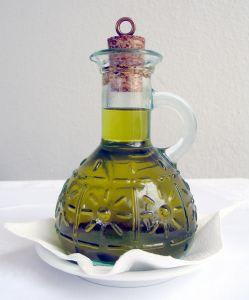There is no tractate, or even chapter, in the Mishna devoted to Chanuka. The mitzva of the Chanuka lights is mentioned principally in the second chapter of tractate Shabbat, which discusses the wicks and oils which are suitable for Shabbat candles. By way of contrast, the gemara discusses the distinction between Shabbat candles and those of Chanuka.
The mishna disqualifies for Shabbat use all oils and wicks which don’t create a bright, even light. If the flame doesn’t draw the oil properly, the light will flicker and perhaps be extinguished. Then there will be no Shabbat light to enhance the Shabbat meal, and even worse the householder may be tempted to desecrate Shabbat by trying to adjust the lamp.
By contrast, any oils and wicks are acceptable for Chanuka. The commandment is fulfilled by lighting the Chanuka lights, and even if they should by chance go out afterwards the mitzva has been fulfilled (Shabbat 21a,b).
[On a weekday, relighting is optional, without brachot. On Shabbat, of course, relighting is forbidden.]
The Sefat Emet, in the name of his grandfather (Chidushei HaRim), gives a fascinating interpretation to this law. We will precede by mentioning that through- out his commentary, the Sefat Emet emphasizes that the Chanuka light is a symbol for the human soul, as the verse states, “The lamp of Hashem is the soul of man” (Mishlei 20:27). It follows that the Shabbat lights and the Chanuka lights represent two different kinds of Jew.
The Sefat Emet explains that there are those individuals who do not “burn” properly on Shabbat; the divine light “flickers” in them on this day. In other words, they are not able to properly appreciate and internalize the unique and exalted holiness of the Sabbath day. Yet these same individuals are able to blaze on Chanuka.
The difference, according to the Sefat Emet, is that on Chanuka we have the additional commandment of Hallel v’Hodaah, praise and acknowledgement for the Chanuka miracle.
(As explained in the gemara there.) These in turn represent two different levels of appreciation: praise is possible only for someone who truly appreciates the magnitude of the miracle. But mere acknowledgment is possible even for a lowly person, stained with transgression. Even if he can’t whole- heartedly praise God for the miracle, he can at least recognize and acknowledge its existence.
But acknowledgment of the mere fact of the miracle brings in turn to an appreciation of its significance. In fact, it is specifically the lowly person who will be able to perceive that mere flesh and blood are not really worthy of miracles, and that they are a special benefice from God. This will lead the person in turn to sincere praise of Hashem, which is the essence of the inner fire represented by the Chanuka light. (Sefat Emet, Chanuka 5633, sixth night)
Rabbi Asher Meir is the author of the book Meaning in Mitzvot, distributed by Feldheim. The book provides insights into the inner meaning of our daily practices, following the order of the 221 chapters of the Kitzur Shulchan Arukh.
The words of this author reflect his/her own opinions and do not necessarily represent the official position of the Orthodox Union.
